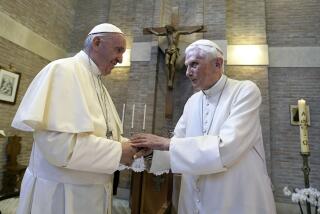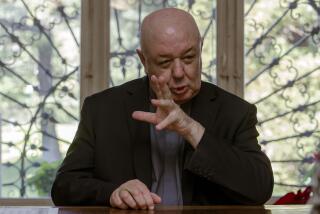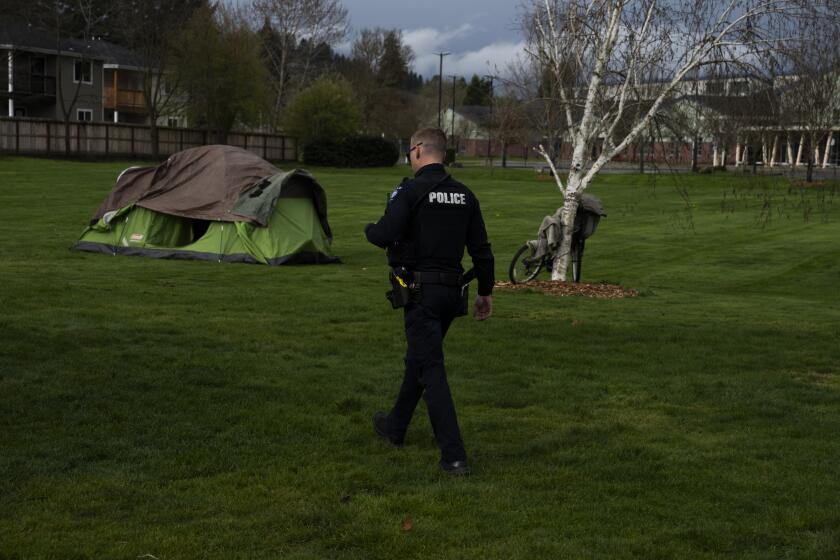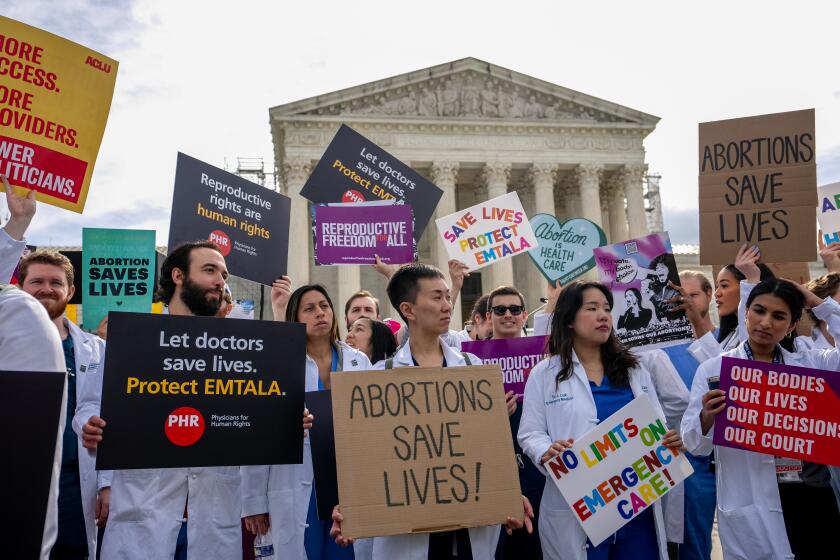Is Benedict helping Francis ‘downsize’ the papacy?

Vaticanologists inside and outside journalism have been puzzling over the surprise appearance of Pope Emeritus Benedict XVI at a ceremony Saturday at which his successor, Pope Francis, installed new members of the College of Cardinals.
ABC News described the event as “an unprecedented blending of papacies past, present and future” (the “future” referring to the presumed presence of Francis’ successor among the new and veteran cardinals in attendance).
But what did Benedict’s presence signify?
PHOTOS: Pope Francis’ small steps to lift liberals’ hearts
One theory is that it was designed to shore up the credibility of the new crop of 19 cardinals with Catholic traditionalists who pine for Benedict’s papacy and look askance at the reformist Francis. That theory can be spun in at least two different ways: as proof that Francis is so distrusted by conservative Catholics that he needs to reassure them by inviting his predecessor, or as a sign of the present pope’s shrewdness in co-opting the conservatives by associating their hero with his more inclusive cohort of cardinals.
My own take on the “blending of papacies” is that it serves the quite different agenda that Francis seems to be pursuing: the downsizing and de-mythologizing of the papal office.
Almost nine years ago I interviewed John R. Quinn, the retired archbishop of San Francisco and the author of a book titled “The Reform of the Papacy: The Costly Call to Christian Unity.” In a column drawn on the book and the interview, I described what a downsized papacy might look like.
For example, it would be “more parochial, more local, with, most likely, an Italian pope who tended to his Roman flock and didn’t stride so much on the world stage.” All right, Francis is an Argentinian (albeit one of Italian descent), but otherwise he matches my description. To the delight of liberal Catholics, he prefers to refer to himself as “Bishop of Rome” rather than “pope” or “pontiff.”
Also, I wrote, a downsized papacy “would not have to be a lifetime office, sparing John Paul’s successors the anguish he experienced in recent years, which, however edifying, is not an ordeal imposed on other aged bishops.”
Under canon law and according to Catholic theology, a retired pope has no residual authority. Still, the optics of two white-cassocked popes — one active, one emeritus — undermine the mystique of the pope as a monarchical figure. (That’s why some conservative Catholics were made uneasy by Benedict’s abdication.)
Perhaps Benedict’s presence at last weekend’s ceremony reflected nothing more than Francis’ generosity toward his frail predecessor. But the new pope is a canny communicator, and one message communicated by the presence of two popes together is that popes, like other bishops, don’t have to serve for life.
Who knows: If Benedict lives a few years longer and the 77-year-old Francis desires to retire at 80, there could be three popes at a future ceremony in St. Peter’s Basilica.
ALSO:
Justice Clarence Thomas’ silence is ‘disgraceful’? Not really.
U.S. women’s Olympic hockey team: Yes, there is crying in hockey
A costly pain in the neck, and what it says about healthcare in the U.S.
Follow Michael McGough on Twitter @MichaelMcGough3
More to Read
A cure for the common opinion
Get thought-provoking perspectives with our weekly newsletter.
You may occasionally receive promotional content from the Los Angeles Times.







